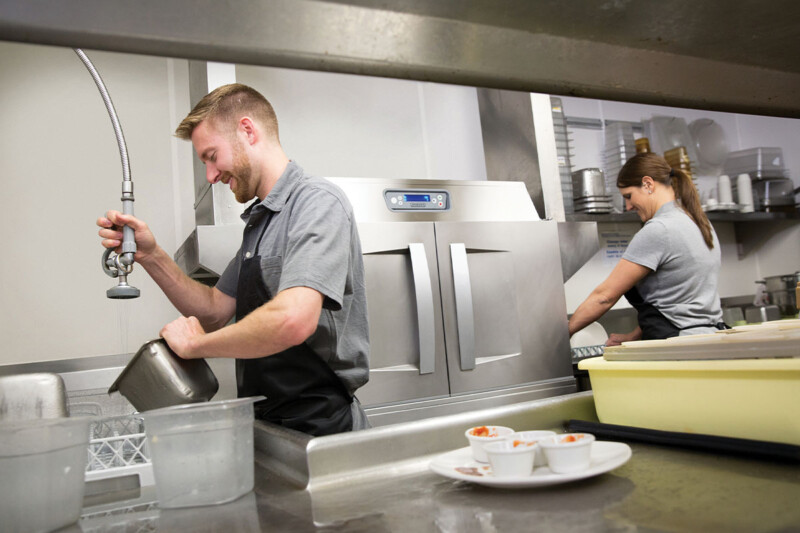Mere weeks after its installation at a major Chicago-area hospital, the $100,000+ flight-type warewasher already had issues.
“The managers requested service calls, saying the warewasher wouldn’t drain or fill right, and the wares kept jamming as they went through,” recalls Bruce Hodge, president of Bloomington, Minn.-based General Parts.
“We would come out first thing in the morning before meal service began. Our techs would pull the screens, check the drains—but everything was clear and working properly,” Hodge says.
One afternoon, a General Parts tech who had responded to a few of the earlier, fruitless warewasher calls happened to be servicing another piece of kitchen equipment at the hospital. He poked his head into the dishroom to see how the warewasher was doing. The cause of all the earlier problems was immediately apparent.
“The afternoon shift workers had removed all the intake drain screens; the screens were propped up against the wall,” Hodge says. “We found out they thought the screens ‘got in the way’ and the machine would work better ‘without all that stuff in there.’”
But of course, without those screens, food debris clogged the drains and in one case, jammed the pump and caused the motor to burn out (a $4,000 repair, not covered by the warranty).
“The morning crew had been properly trained to check the drains and pumps. So they were cleaning out blockages left behind by the afternoon and evening crews and replacing the screens, not realizing that the later crews were reporting problems,” Hodge says. “By the time we’d arrive for the service call in the morning, the issues had been resolved by the morning crew, so we were puzzled.”
The tech’s afternoon observations uncovered answers to other problems, as well. “The client also told us that the belt fingers designed to hold wares upright through the cycle kept breaking, to the tune of 200 of them a month,” Hodge says. It turned out that the late crew was overloading the belt so much that items were sticking out the edges, causing jams and breaking the fingers off under the stress, he explains.
The hospital signed a maintenance contract with General Parts. “Our first move was to have one of our top techs conduct training courses for all three dishroom shifts. We insisted that the lead kitchen managers be present as well,” Hodge says. “After the training, the hospital’s service expenses for the warewasher went down considerably. Sure, they’d still break off fingers now and then, but the constant complaints about the warewasher not draining or filling properly—all those issues went away.”
The facility spent thousands of dollars over a five-month period trying to figure out what was going on with the machine, according to Hodge. His bottom line: “For your mission-critical pieces of equipment, make sure all crews are trained to maintain and service these machines regularly. That’s an absolute essential, regardless of who does it.”
Copyright FER June 2013
RELATED CONTENT
- Advertisement -
- Advertisement -
- Advertisement -
TRENDING NOW
- Advertisement -
- Advertisement -
- Advertisement -


